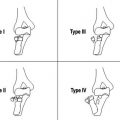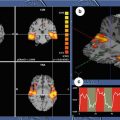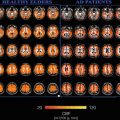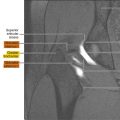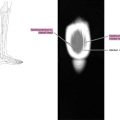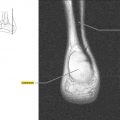MR imaging has been increasingly used in the diagnostic work-up of benign and malignant conditions of the gastroesophageal tract. The use of an adequate MR imaging protocol is crucial, although standardization of imaging studies is still far from being implemented. Research on MR imaging-based biomarkers show promising results in assessing tumor aggressiveness and prognosis, and in the evaluation of response to treatment, both in esophageal and gastric cancers.
Key points
- •
MR imaging can be included in the diagnostic pathway of a wide range of benign and malignant conditions of the esophagus and the stomach.
- •
An adequate MR imaging protocol is crucial for the assessment of the esophagus and stomach. This includes high-resolution multiplanar T2-weighted, diffusion-weighted, and dynamic contrast-enhanced imaging.
- •
There remains a need for improvement and standardization before MR imaging becomes an accepted and widely adopted method to investigate the gastroesophageal tract.
- •
Different quantitative imaging biomarkers from DWI and DCE hold promise in the evaluation of the aggressiveness, treatment response and prognosis of esophageal and gastric cancer.
Introduction
A wide range of esophageal and gastric conditions (both benign and malignant) can be investigated with endoscopy or barium contrast studies for the evaluation of mucosal surface lesions; such techniques, however, provide little or no information about the extramucosal extent of disease.
Other imaging modalities, that is, endoscopic ultrasound (EUS), computed tomography (CT), and 18 F-fluorodeoxyglucose ( 18 F-FDG) PET permit the assessment of parietal and extraparietal involvement, lymphadenopathies, and distant metastases.
Over the last 20 years, MR imaging has been increasingly used as a valid diagnostic tool in adjunct to these imaging techniques.
In this article, the authors provide the reader with some of the most common MR imaging findings in the gastroesophageal tract and discuss the goals for a widespread application of this technique at this regard.
MR imaging technique
MR imaging is performed with either a 1.5 T or 3 T system, using an external surface coil (ie, multiple-channel phased array cardiac coil) with cardiac and respiratory triggering.
MR imaging of the esophagus does not require any specific preparation apart from the administration of intramuscular scopolamine (in the absence of contraindications), especially when the gastroesophageal junction is the anatomic region of interest.
Differently from the esophagus, MR imaging of the stomach requires accurate patient preparation: in particular, proper visceral distension is fundamental to depict the multilayer pattern of the gastric wall.
After a 6-hour fasting, distension is obtained by oral administration of at least 500 mL of water immediately before the examination and an intramuscular injection of scopolamine is usually administered to decrease bowel peristalsis. Some authors suggest the use of effervescent granules to obtain gastric distension but in our experience it is not generally used, owing to the risk of increasing air artifacts from the gastric lumen.
When water is used as oral contrast agent, the patient is scanned in the prone or supine position dependent on the location of the region of interest to allow proper contact between the oral contrast medium and the visceral wall. The positions should be reversed when effervescent granules are used.
Although standardized MR imaging protocols for both organs have yet to be reported, as a rule of thumb the examination should include:
- •
High-resolution multiplanar T2-weighted imaging (T2-WI), including turbo spin echo sequences with and without fat suppression with cardiac and respiratory gating.
T2-WI is crucial for the anatomy of the organ, as it allows excellent soft-tissue contrast together with good spatial resolution and a high signal-to-noise ratio:
- •
Axial diffusion-weighted imaging (DWI) with different b values (usually up to 1000 s/mm 2 ).
DWI provides information about the tissue structure and cellular density because it reflects the mobility of water protons measuring the apparent diffusion coefficient (ADC). This quantitative index is considered a promising imaging biomarker both for the esophagus and the stomach :
- •
Axial breath-hold T1-weighted sequences with fat suppression, acquired before and after intravenous injection of contrast agent.
Dynamic contrast enhanced (DCE) MR imaging involves the acquisition of serial T1-weighted images before and after injection of a bolus of chelated gadolinium molecule. The application of DCE-MR imaging in oncology has been increasing over the last few years thanks to continuous technical developments. Moreover, different quantitative biomarkers extrapolated from DCE-MR imaging maps according to the Tofts model have been investigated in the gastroesophageal tract.
Tables 1 and 2 list the 2 protocols for MR imaging of the esophagus and the stomach, respectively. As far as the esophagus is concerned, the study should commence with a sagittal high-resolution T2-weighted acquisition to orientate the axial images perpendicular to the long axis of the organ. A coronal acquisition should be also added in the protocol if the region of interest is the gastroesophageal junction, because this allows to clearly delineate the diaphragmatic hiatus.
| Parameters | SS Fat-Suppressed T 2 -Weighted | T 2 -Weighted | SS EP Diffusion-Weighted a | Gadolinium Contrast-Enhanced | TSE PD-BB |
|---|---|---|---|---|---|
| Plane | Axial and sagittal/coronal | Axial | Axial | Axial | Sagittal |
| TR (ms) | Shortest | 2400 | Single heartbeat | Shortest | 1600 (2 heartbeat) |
| TE (ms) | 100 | 80 | 58 | Shortest | 10 |
| Slice thickness (mm) | 4 | 4 | 4 | 25 | 6 |
| Slice gap (mm) | 1 | 0.4 | 1 | Over contiguous slice | – |
| Matrix size (reconstructed) | 320 | 288 | 336 | 288 | 512 |
| Field of view (mm) | 365 × 284 | 300 × 280 | 365 × 319 | 365 × 289 | 350 × 350 |
| Flip angle (°) | 90 | 90 | 90 | 10 | 90 |
| Acquisition time (s) | 14 | 150 b | 104 b | 94 | 11 |
| Number of slices | 35 | 18 | 30 | 65 | 10 |
b Total duration according to the cardiac and respiratory frequency.
| Parameters | SS Fat-Suppressed T 2 -Weighted | T 2 -Weighted | SS EP Diffusion-Weighted a | Gadolinium Contrast-Enhanced |
|---|---|---|---|---|
| Plane | Axial and coronal | Axial | Axial | Axial |
| TR (ms) | Shortest | 2400 | Single heartbeat | Shortest |
| TE (ms) | 100 | 80 | 58 | Shortest |
| Slice thickness (mm) | 4 | 5 | 4 | 25 |
| Slice gap (mm) | 1 | 0.8 | 1 | Over contiguous slice |
| Matrix size (reconstructed) | 336 | 288 | 336 | 288 |
| Field of view (mm) | 365 × 284 | 300 × 280 | 365 × 319 | 365 × 289 |
| Flip angle (°) | 90 | 90 | 90 | 10 |
| Acquisition time (s) | 14 | 150 b | 104 b | 94 |
| Number of slices | 35 | 18 | 30 | 65 |
b Total duration according to the cardiac and respiratory frequency.
MR imaging anatomy
Esophagus
The esophagus is a muscular tube (20–25 cm in length) that connects the pharynx to the stomach and is composed of 3 segments: cervical, thoracic, and abdominal.
Histologically, it is composed of different layers:
- •
The inner layer (ie, stratified squamous epithelium that changes abruptly at the cardia of the stomach into simple columnar epithelium)
- •
The muscularis mucosae
- •
The submucosa
- •
The inner circular muscular layer
- •
The outer longitudinal muscular layer
There is no serosal layer and the thickness of the esophageal wall is usually considered physiologic up to 5 mm.
On T1-weighted imaging, the esophagus appears as a structure of low-signal intensity, contrasted by the high-signal intensity of the surrounding fat. The esophageal layers are clearly visible on high-resolution T2-WI MR imaging. On an axial T2-WI acquisition, this is characterized by a 3-layered pattern, the distinction of which is mainly based on the higher signal intensity of the middle layer ( Fig. 1 ) :
- •
Mucosa (inner layer): intermediate/low signal-intensity
- •
Submucosa: high-signal intensity
- •
Muscularis propria (outer layer): low-signal intensity

There is also evidence of ex vivo studies conducted at 7T demonstrating up to 8 layers of the esophageal wall on ultra-high-resolution T2-weighted sequences.
Stomach
The gastric wall consists of the following 5 layers:
- •
Mucosa (inner layer)
- •
Submucosa
- •
Muscularis propria
- •
Subserosa
- •
Serosa (outer layer)
However, on T2-WI acquired at 1.5 T, the gastric wall is generally depicted as a 3-layer structure, because the muscularis propria, the subserosa, and the serosa are not clearly distinguishable :
- •
Mucosa: low-signal intensity
- •
Submucosa: intermediate- to high-signal intensity
- •
Outer layer (corresponding to the muscularis propria, the subserosa, and the serosa): low-signal intensity
After intravenous administration of a contrast agent, the normal gastric wall demonstrates a 2-layer pattern, corresponding to the inner mucosal layer (early enhancement) and the outer submucosal and muscular layers (delayed enhancement) ( Fig. 2 ).


